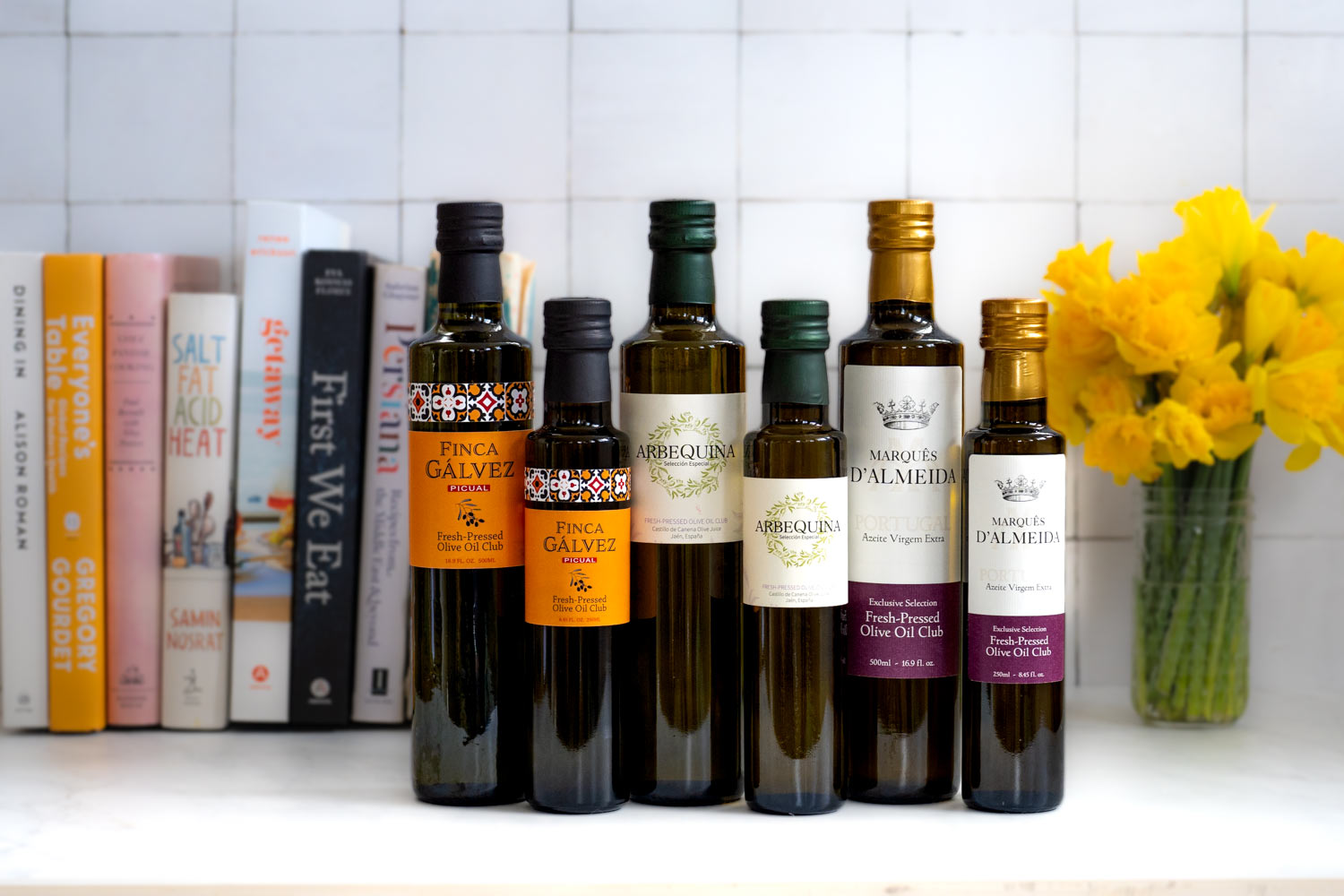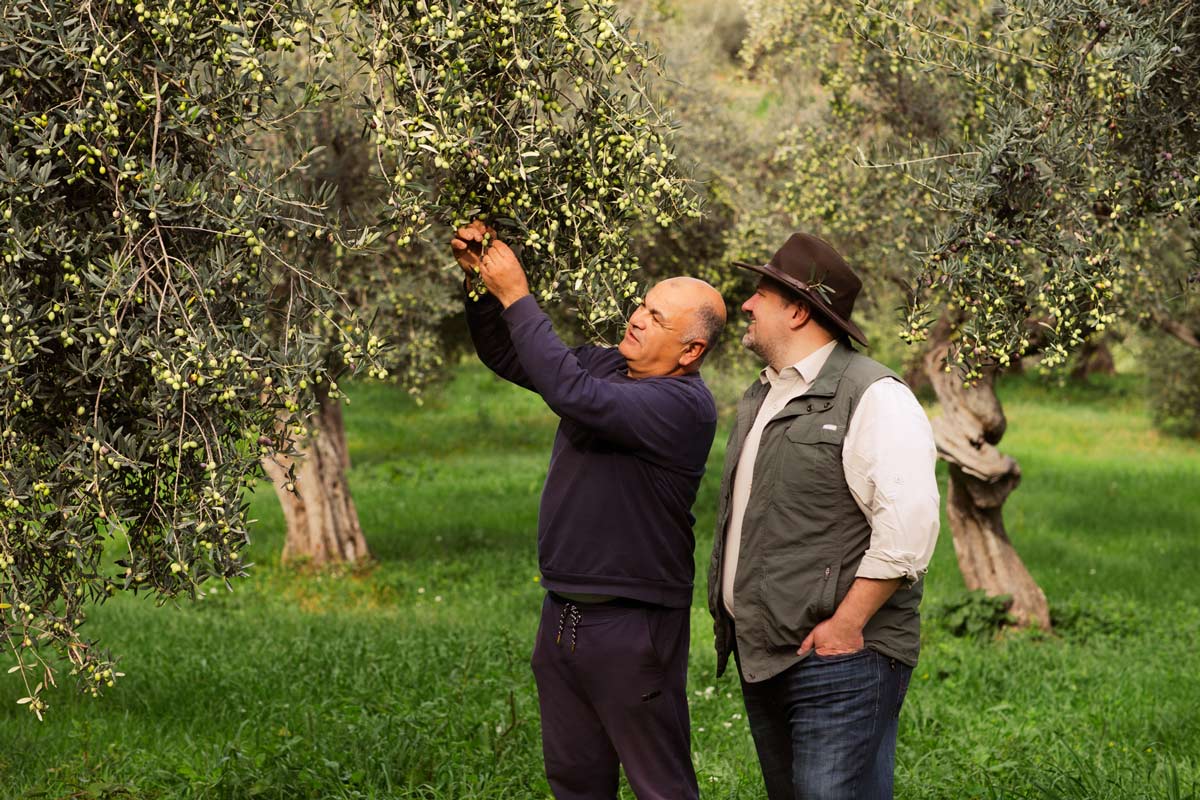Debunking Common Myths About Extra Virgin Olive Oil (EVOO) Once and for All
The expression “truth in advertising” seems to have gotten lost in the shuffle lately, especially when it comes to extra virgin olive oil, or EVOO. You’re likely to see buzzwords on labels and in ads without any way for you to know if a claim is true. There are also some persistent and confusing myths about EVOO that need to be corrected once and for all!
As your Olive Oil Hunter, I’d like to set the record straight so that you not only will enjoy the marvelous taste of true extra virgin olive oil but also get all of the healthful benefits from its high level of antioxidants, notably the polyphenols.
Myth: The best olive oil comes from Italy.
Fact: I love Italian olive oil—and I’m in Italy once a year at the optimal harvest time to work with master millers on their best oils. But I spend the other months circling the globe to source the best, just-pressed olive oils—and for half the year, that’s in the southern hemisphere. I can tell you that there are a number of countries that have conditions—like soil and climate—that are just as conducive to growing the right olives as Italy and other countries around the Mediterranean. Farms in Chile and Australia, for instance, grow a diverse variety of olives and produce phenomenal oils. The reason I source different oils each season is because freshness counts—in our summer months, I want you to have the taste of just-pressed olive oil from Chile, which is going to exceed the flavor of an Italian oil that was pressed and bottled six or more months earlier.

Myth: If it’s bottled in Italy, it’s a quality oil.
Fact: Many store-bought oils state “bottled in Italy” on the label, but that doesn’t mean the oil was pressed there or when it was pressed. A number of independent consumer investigations over the years have found that many off-the-shelf olive oils contained oils from other countries—they were just put in bottles in Italy—or, worse, that the olive oil was diluted with a lesser oil, like canola. Because none of this has to be disclosed on the label, buyer beware! Not only do these low-quality oils taste unappealing, but you’re also not getting the nutrients you thought you were.
There’s also an important distinction to be made between an oil mixed from a variety of producers/countries, as described above, and an oil that’s a masterful blend of a few different varietals, all of which were fresh-pressed from the same harvest and shipped quickly to you. The same way that a chef combines herbs and spices for the perfect dish, I bring together different olive varieties to create flavor profiles using the best of what my artisanal growers harvest each season. I might choose just one variety or use up to, say, three to create the oils for each of my collections.
You’re most likely to find the word “blend” tucked away in a corner of the label on a store-bought brand with no explanation, whereas in the Pressing Report, which I include with every Fresh-Pressed Olive Oil Club shipment, I write in great detail about the olives I chose.
Myth: You can’t use high-heat cooking methods with olive oil.
Fact: Olive oil is wonderful for so much more than drizzling on salads and other cold dishes. Premium EVOO has a smoke point of over 400°F. The antioxidants in high-quality extra virgin olive oil help it stay fresh and also help keep it from oxidizing during sautéing and frying, so cook up a storm! What’s more, raw vegetables cooked in EVOO with either of those methods tend to have more antioxidants as a result, according to research published in the journal Food Chemistry.
Myth: Olive oil should taste neutral, not bitter.
Fact: Bitterness is a desirable attribute of an olive oil, alongside pungency and fruitiness. It’s actually a sign of freshness. Great olive oil is often measured by whether it makes you cough when you sip it. The cough reaction tells you the oil is high in healthful polyphenols. A premium EVOO may be described as a one-, two-, or three-cough oil—the more the better!
There’s a reason store-bought oils taste bland. The highest-quality, best-tasting olive oil comes from olives harvested and pressed when they’re still green and contain only 10% oil—low yield but maximum flavor. Fully ripe olives that have turned black produce three times as much oil but have nowhere near the same taste. This is what many mass producers will use to get more product and why their oils have a lackluster taste. For the Fresh-Pressed Olive Oil Club, I always include a mild EVOO, along with a medium and a bold selection, but it’s chockful of nutrients, and the taste is never bland.

Myth: Olive oil should keep for more than a year.
Fact: That’s pushing the limits of freshness. Time, temperature, and light all conspire to affect olive oil. In terms of time, look for a harvest date on the label, not just an expiration date. You want to buy oil within six to 12 months of harvest. The expiration date doesn’t tell you when that was. In terms of guarding against light, olive oil should be bottled in dark glass, which helps shield it. In terms of heat, never keep your bottles out on the counter, near a window, in a cabinet above the stove, or any area that’s warm. The bottom shelf of a pantry cabinet is best.
Do take out your olive oil at meals and use it—don’t save it for special occasions. In our house, when we set the table, we put a bottle alongside the salt and pepper—it’s a “sauce” that Mother Nature has made for you, so enjoy it.
Myth: If it’s sold at my gourmet food store, it must be the real thing.
Fact: When you see the words “extra virgin,” know that they can have a very broad meaning. Extra virgin means that the oil was made from the first pressing of the olives, which is a good thing. But if that olive oil wasn’t made by mechanical means only—without heat or chemicals—and if it wasn’t bottled and shipped right away, it won’t taste much better than a lesser grade. Nor will it have the high levels of polyphenols that give extra virgin olive oil its superfood status and unmistakable taste.
Myth: The color of the EVOO is a good indicator of quality.
Fact: Many fresh-pressed olive oils are green in color, and that can range from a grassy green to a gold-green. But color isn’t the be-all and end-all indicator of quality. There should be a strong and bright aroma when you bring it to your nose—the bouquet should transport you to the olive grove! And, of course, the flavor should really excite your taste buds. Remember that olive oil is a fruit juice, so there should be a bright fruitiness to it.
Get More Recipes In Your Inbox!